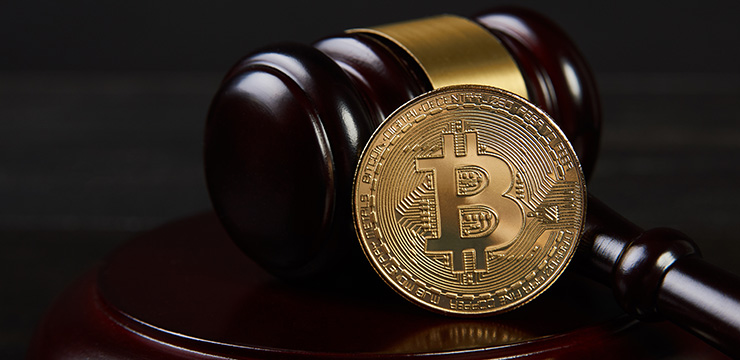In January, the UK’s Financial Conduct Authority (FCA) released a consultation on potential guidance on cryptoassets that provides useful direction on how cryptoassets fall within the current regulatory regime. This consultation, one of the publications resulting from the Cryptoasset Taskforce’s October 2018 final report, does not drastically alter the current regulatory landscape, but rather provides clarity on the FCA’s current regulatory perimeter. The consultation also references a consultation by Her Majesty’s Treasury (HMT) that is expected in early 2019, which will explore legislative changes and potentially broaden the FCA’s regulatory remit on cryptoassets.

The FCA consultation on guidance asks for responses to the questions it poses by April 2019. The FCA does not intend to publish its final guidance until this summer; the guidance noted in this consultation paper is subject to change and should not be considered the FCA’s definitive position. However, subject to the feedback that is received, the consultation gives a good indication of the FCA’s thinking with regards to the regulation and classification of cryptoassets. Some of the points highlighted in the consultation are discussed below.
Exchange Tokens / Anti-Money Laundering
The FCA has confirmed that exchange tokens, such as Bitcoin, Litecoin or Ether, do not fall within the regulatory perimeter. This had already been expressed in the Cryptoasset Taskforce’s report, but it is useful to have it repeated here.
However, exchange tokens will be caught (along with other cryptoassets) by the 5th Anti-Money Laundering Directive (5AMLD), which will be transposed into UK law by the end of 2019. HMT will formally consult on this, but the FCA expects that 5AMLD will catch exchange between cryptoassets and fiat currencies or other cryptoassets, transfer of cryptoassets, safekeeping or administration of cryptoassets and provision of financial services related to an issuer’s offer and/or sale of cryptoassets. Being caught by the 5AMLD does not, by itself, mean the cryptoasset will be subject to FCA regulation.
Security Tokens
The FCA’s discussion on the classification of security tokens is arguably the most anticipated part of its guidance on cryptoassets. The discussion makes clear that cryptoassets that fall within the definition of a security will be treated as such. However, given that cryptoassets can provide a range of rights and other characteristics, it can be difficult to determine whether they do fall within such definition. While noting that it can be difficult to categorize tokens, the guidance describes the most relevant traditional forms of specified investments that security tokens may fall into. The guidance also notes that products that derive their value from or reference cryptoassets, such as options, futures, contracts for difference and exchange-traded notes, are likely to fall within the regulatory perimeter, even if the underlying cryptoasset does not.
The FCA states in its guidance that tokens that are issued in exchange for other cryptoassets, and not for fiat currency, will not necessarily be exempt from the regulatory regime if they are considered security tokens.
Issuing of one’s own security tokens does not require the issuing company to have a regulatory licence, in the same way that issuing one’s own shares does not require a licence. However, authorization must be obtained by any exchanges in which the tokens are traded, advisers and brokers, and the financial promotions regime will need to be complied with.
Shares / Debt instruments
According to the consultation, if a cryptoasset has the features of a share then it will be considered a specified investment and certain activities involving it will require authorization or exemption. In determining whether a cryptoasset is classed as a share, the FCA has noted that a separate legal personality, and a body which survives a change of member, are significant but not determinative factors in classifying the cryptoasset. Other factors include whether the cryptoasset provides voting rights, control, ownership, access to a dividend based on the performance of the company or rights to distribution of capital on liquidation. Interestingly, the FCA has noted that the definition is dependent on company and corporate law.
There is a trend for token offerings to be packaged as “security token offerings” and promoted in accordance with security requirements, as ICOs are no longer attractive to investors. However, many of these “security token offerings” do not give equity rights. Calling a token a “security token” will not change the nature of the token itself. The FCA has not been clear on this subject, but arguably a security token that does not meet the company law and corporate law definition of a share can be treated as a utility token and not require the trading platform, broker or advisers to be licensed.
A cryptoasset that represents money owed to the token holder will be considered a debt instrument, and therefore will be considered a security token.
If the cryptoasset is considered a share or debt instrument, and is capable of being traded on the capital market, it will be considered a transferable security under the Markets in Financial Instruments Directive (MiFID), and the MiFID regime will apply. As with traditional securities, this does not require the security to be listed. If the cryptoasset is able to be transferred from one person to another in such a way that the transferee will acquire good legal title, it is likely a transferable security. It is important to note that a cryptoasset may be considered a share under the UK law, but not a transferable security under MiFID.
Warrants, certificates representing certain securities and rights and interests in investments
Warrants may be issued as cryptoassets in situations where an issuing entity issues A tokens, which will provide the token holder the right to subscribe for B tokens at a later date. If the B tokens represent shares or debentures (or other specified investments), then the A tokens will be considered warrants and therefore specified investments. It is important to note that for the A tokens to be warrants, the B tokens will need to be new cryptoassets issued by the issuing entity. If the A tokens provide a right to purchase B tokens from a secondary market, the A tokens will not be considered warrants.
Similarly, A tokens that provide the token holder with a contractual or property right over other investments (either in cryptoasset or traditional form) will be considered certificates representing certain securities. Cryptoassets which represent a right to or interests in other specified investments are also classified as securities.
Units in collective investment schemes
Certain cryptoassets may be considered units in a collective investment scheme, notably tokens that allow investors to invest in assets such as art or property. Provided the investments in the cryptoassets are pooled, and the income or profits that the cryptoasset holders receive are also pooled, it will likely be considered a unit in a collective investment scheme. Importantly, if the token holders have day-to-day control of the management of the investment, it will fall outside this definition.
Utility Tokens
Tokens that represent rewards, such as reward-based crowdfunding, or the access to certain services, will be considered utility tokens. Utility tokens do not have the features of securities, and therefore fall outside the regulatory perimeter. The FCA has noted that the ability to trade utility tokens on the secondary market will not affect the classification of the token – even though this may mean individuals purchase these as investments.
Payment Services and Electronic Money
The guidance confirms that the use of cryptoassets is not covered by the payment services, unless the cryptoasset is considered electronic money. However, where cryptoassets act as a vehicle for money remittance (i.e. the transfer of money from one account to another, perhaps with a currency exchange) then the fiat sides of the exchange will be caught by the payment services regulations.
While cryptoassets do not fall within the payment services regime, they may fall within the e-money one. To the extent that the cryptoasset is issued on receipt of funds (i.e. fiat currency, not other cryptoassets) and the cryptoasset is accepted by a person other than the electronic money issuer, it may be considered electronic money (unless it is excluded). This would include cryptoassets that are issued on receipt of GBP and are pegged to that currency, as long as the cryptoasset is accepted by a third party. Therefore, stablecoins that meet the definitions set out above may fall within the definition of electronic money.
Issues Outstanding
None of the guidance’s declarations is new, but the guidance does provide useful clarification. What is not clear is how utility or payment tokens wrapped in a security token wrapper but not containing traditional security/equity rights will be treated. In our view, if the token is a utility token dressed in a security token wrapper, it should not necessarily be treated as a security, for UK regulatory purposes including requiring an authorized multilateral trading facility (MTF) to carry out secondary trading. The FCA says nothing here conflicting with this, but it would be useful to have clarity in this regard.







